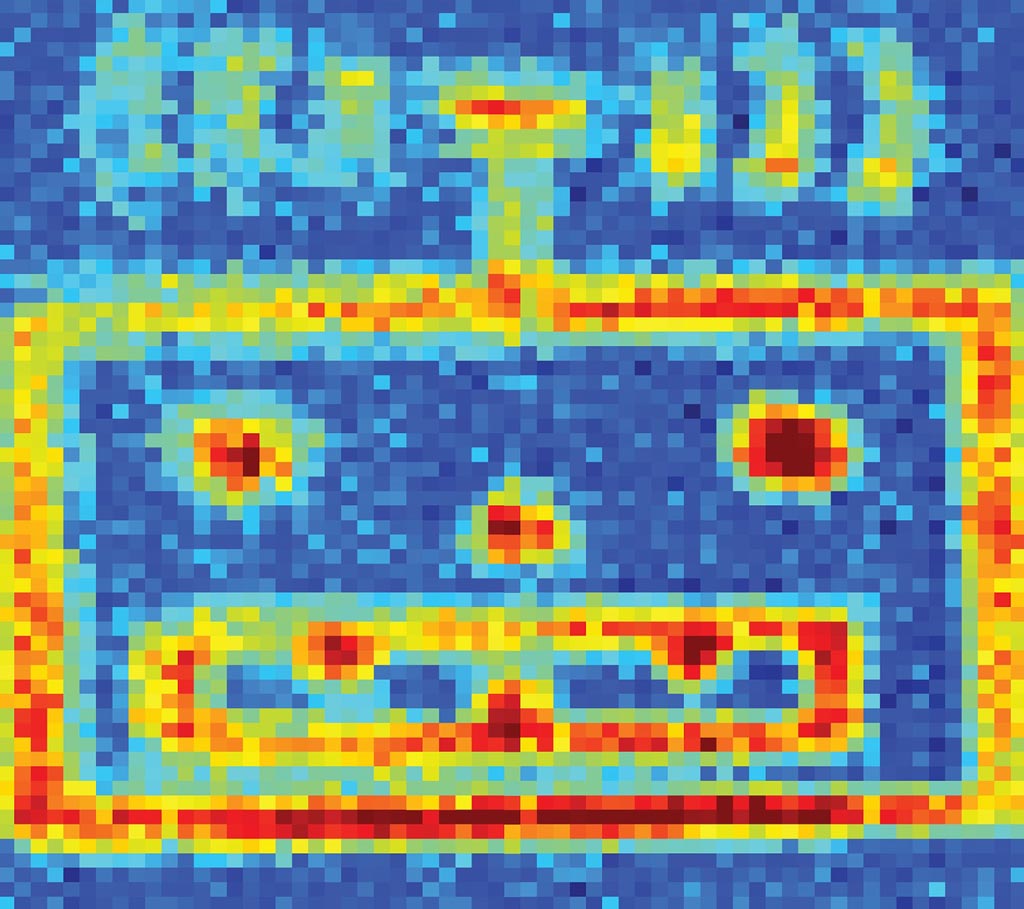Terahertz Imaging Speeds Up Skin Cancer Detection
By MedImaging International staff writers
Posted on 07 Sep 2017
A new terahertz (THz) imaging approach combines micron-scale resolution images and computational approaches designed to speed up image acquisition.Posted on 07 Sep 2017
Developed by researchers at the University of Exeter (United Kingdom), QinetiQ (Farnborough, United Kingdom), and the University of Glasgow (United Kingdom), the near-field THz imaging approach spatially modulates THz pulses with a set of shaped binary optical patterns. Using a digital micromirror device (DMD), the researchers projected a pattern of 800nm light onto a 6-μm-thick silicon wafer, which made the wafer opaque to THz light in areas where the 800nm light hits the silicon. Because the pattern created by the DMD is known, a computer can reconstruct an image of the object based on the detected light.

Image: A 2x2mm THz image taken on the silicon wafer (Photo courtesy on Stantchev et al).
Objects placed on the exit interface of the wafer could thus be reconstructed using a single-element detector that measures electric field amplitude of the transmitted radiation. The short-lived THz near fields allowed a spatial resolution of about nine microns (μm). Using compressed sensing and adaptive imaging algorithms that under-sampled the objects, the researchers were able to achieve a three times faster image acquisition than available with conventional technologies. According to the researchers, the combination could detect early-stage skin cancer without a tissue biopsy. The study was published on August 17, 2017, in Optica.
“We used these algorithms to determine which regions of the wafer are transparent and which regions are not transparent, essentially creating pixels,” said senior author Rayko Stantchev, PhD, of the University of Exeter. “Because we were using a single-pixel terahertz detector, normally each pixel would acquire one measurement. However, by creating many transparent pixels in one measurement, an image can be acquired more quickly by taking fewer measurements than the number of pixels.”
“Skin cancer can already be detected using terahertz light, but because of the low resolution of current imaging approaches, the cancer can only be seen after it has grown quite large. Ideally, we want to detect the cancer early, when it is still small,” concluded Dr. Stantchev. “We hope that high-resolution terahertz images, combined with the ability to take an image quickly, could eventually lead to a device that could detect cancer in the doctor's office.”
In conventional imaging, spatial resolution is limited by the diffraction limit, which is determined by the wavelength of light. Since most imaging techniques detect scattered light at a distance from the object being imaged, the diffraction limit is higher. By using near-field THz waves, a resolution about 1/45 of the white light wavelength can be achieved. And since THz wavelengths fall between microwaves and infrared light (IR) light on the electromagnetic spectrum, they do not carry enough energy to harm tissue.
Related Links:
University of Exeter
QinetiQ
University of Glasgow








 Guided Devices.jpg)





